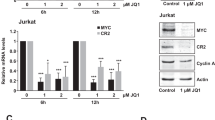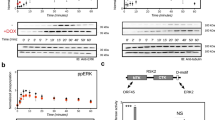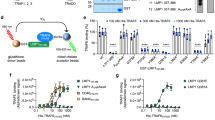Abstract
EBNA-3 (also called EBNA-3A) is one of the EBV encoded nuclear antigens that are necessary for B-cell transformation. EBNA-3 is known to target RBPs, nuclear proteins that also interacts with EBNA-2, EBNA-4 and EBNA-6. In order to identify additional EBNA-3 targets, an EBV-transformed human lymphocyte cDNA library was screened in the yeast two-hybrid system with N-terminus truncated EBNA-3 that cannot interact with RBP-Jκ. A clone, encoding Xap-2 protein, a cellular partner of Hepatitis B virus X-antigen was isolated. This protein is also known as the p38 subunit of the aryl hydrocarbon receptor complex (ARA9). The specific binding to EBNA-3 was confirmed by showing that the GST-Xap-2 precipitated EBNA-3 from CV1 cells that were infected with recombinant vaccinia virus expressing EBNA-3. Deletion of the C-terminus of Xap-2 eliminated the binding. Fusion with green fluorescent protein showed that Xap-2 is preferentially cytoplasmic but translocates to the nucleus upon expression of EBNA-3.
This is a preview of subscription content, access via your institution
Access options
Subscribe to this journal
Receive 50 print issues and online access
$259.00 per year
only $5.18 per issue
Buy this article
- Purchase on Springer Link
- Instant access to full article PDF
Prices may be subject to local taxes which are calculated during checkout




Similar content being viewed by others
References
Allday MJ, Crawford DH and Thomas JA . 1993 J Gen Virol 74: 361–369
Carver LA and Bradfield CA . 1997 J Biol Chem 272: 11452–11456
Carver LA, LaPres JJ, Jain S, Dunham EE and Bradfield CA . 1998 J Biol Chem 273: 33580–33587
Gavioli R, De Campos-Lima PO, Kurilla MG, Kieff E, Klein G and Masucci MG . 1992 Proc Natl Acad Sci USA 89: 5862–5866
Hahn ME, Karchner SI, Shapiro MA and Perera SA . 1997 Proc Natl Acad Sci USA 94: 13743–13748
Johannsen E, Miller CL, Grossman SR and Kieff E . 1996 J Virol 70: 4179–4183
Kaise C, Michaelis S and Mitchell A . 1994 Cold Spring Harbor Laboratory Course Manual CSHL Press pp 171–173
Kashuba E, Pokrovskaja K, Klein G and Szekely L . 1999 J Human Virol 2: 33–37
Kobayashi A, Numayama-Tsuruta K, Sogawa K and Fujii-Kuriyama Y . 1997 J Biochem 122: 703–710
Krauer KG, Belzer DK, Liaskou D, Buck M, Cross S, Honjo T and Sculley T . 1998 Virology 252: 418–430
Krauer KG, Kienzle N, Young DB and Sculley TB . 1996 Virology 226: 346–353
Kuzhandaivelu N, Cong YS, Inouye C, Yang WM and Seto E . 1996 Nucleic Acids Res 24: 4741–4750
Meyer BK, Pray-Grant MG, Vanden Heuvel JP and Perdew GH . 1998 Mol Cell Biol 18: 978–988
Radkov SA, Bain M, Farrell PJ, West M, Rowe M and Allday MJ . 1997 J Virol 71: 8552–8562
Robertson ES, Lin J and Kieff E . 1996 J Virol 70: 3068–3074
Strobl LJ, Hofelmayr H, Stein C, Marschall G, Brielmeier M, Laux G, Bornkamm GW and Zimber-Strobl U . 1997 Immunobiology 198: 299–306
Szekely L, Chen F, Teramoto N, Ehlin-Henriksson B, Pokrovskaja K, Szeles A, Manneborg-Sandlund A, Lowbeer M, Lennette ET and Klein G . 1998 J Gen Virol 79: 1445–1452
Szekely L, Pokrovskaja K, Jiang WQ, de The H, Ringertz N and Klein G . 1996 J Virol 70: 2562–2568
Szekely L, Pokrovskaja K and Klein G . 1997 Cell Growth Differ 8: 599–609
Tomkinson B, Robertson E and Kieff E . 1993 J Virol 67: 2014–2025
Vaziri C and Faller DV . 1997 J Biol Chem 272: 2762–2769
Waltzer L, Perricaudet M, Sergeant A and Manet E . 1996 J Virol 70: 5909–5915
Yamaguchi K, Near RI, Matulka RA, Shneider A, Toselli P, Trombino AF and Sherr DH . 1997 J Immunol 158: 2165–2173
Zhao B, Marshall DR and Sample CE . 1996 J Virol 70: 4228–4236
Acknowledgements
We thank Lena Norrenius for the excellent technical assistance and Klas G Wiman for the GST-ARF plasmids. This work was supported by Cancerfonden and by a matching grant from the Concern Foundation, Los Angeles, the Cancer Research Institute, New York.
Author information
Authors and Affiliations
Rights and permissions
About this article
Cite this article
Kashuba, E., Kashuba, V., Pokrovskaja, K. et al. Epstein–Barr virus encoded nuclear protein EBNA-3 binds XAP-2, a protein associated with Hepatitis B virus X antigen . Oncogene 19, 1801–1806 (2000). https://doi.org/10.1038/sj.onc.1203501
Received:
Revised:
Accepted:
Published:
Issue Date:
DOI: https://doi.org/10.1038/sj.onc.1203501
Keywords
This article is cited by
-
New insights into the aryl hydrocarbon receptor as a modulator of host responses to infection
Seminars in Immunopathology (2013)
-
An update on viral association of human cancers
Archives of Virology (2013)
-
Epstein-Barr virus encoded EBNA-3 binds to vitamin D receptor and blocks activation of its target genes
Cellular and Molecular Life Sciences (2010)



